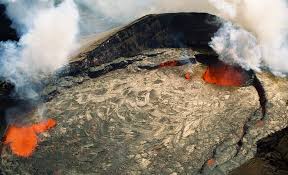 The Kilauea volcano sent a stream of molten lava 30,000 feet into the air on May 18, 2018. The lava lake that is located at the middle of the volcano has completely sank back into the ground. Twenty new fissures have been noted on the volcano’s east rift. Earthquakes are regularly being experienced in the area as the molten lava runs beneath the rocks underneath the ground. Over 1,700 people have been evacuated from their homes. At least 36 buildings have been destroyed so far.
The Kilauea volcano sent a stream of molten lava 30,000 feet into the air on May 18, 2018. The lava lake that is located at the middle of the volcano has completely sank back into the ground. Twenty new fissures have been noted on the volcano’s east rift. Earthquakes are regularly being experienced in the area as the molten lava runs beneath the rocks underneath the ground. Over 1,700 people have been evacuated from their homes. At least 36 buildings have been destroyed so far.
While many people are worried about the vog produced from the volcano, experts say that it is not as much of a problem as some may think. Vog is a scientific term for the water vapor, carbon dioxide and sulfur dioxide gas that spews into the air from the volcano. While it can cause some people to experience respiratory conditions, the main concern has been slick roadways. The vog can also contaminate open water reservoirs. Winds off the ocean, however, are blowing most of the vog offshore.
The state government has handed out more than 18,000 air masks. Yet, Hawaii’s governor says that there is no need to cancel vacations. He says that the two international airports in Hawaii remain open for business, and he encourages tourists to come to the islands saying it affects less than 10 percent of Hawaii’s total land. Therefore, he says there are many beautiful areas that can still be enjoyed.
The last time that this volcano showed activity was in 1924 when it spewed volcanic dust into the air for about 2.5 weeks. The current eruption started on May 3, 2018. Scientists warn that it could get worse before it gets better. Scientists do not know how long the current eruption may continue. They also do not know if the volcano will get more dangerous before finally going back to sleep.


